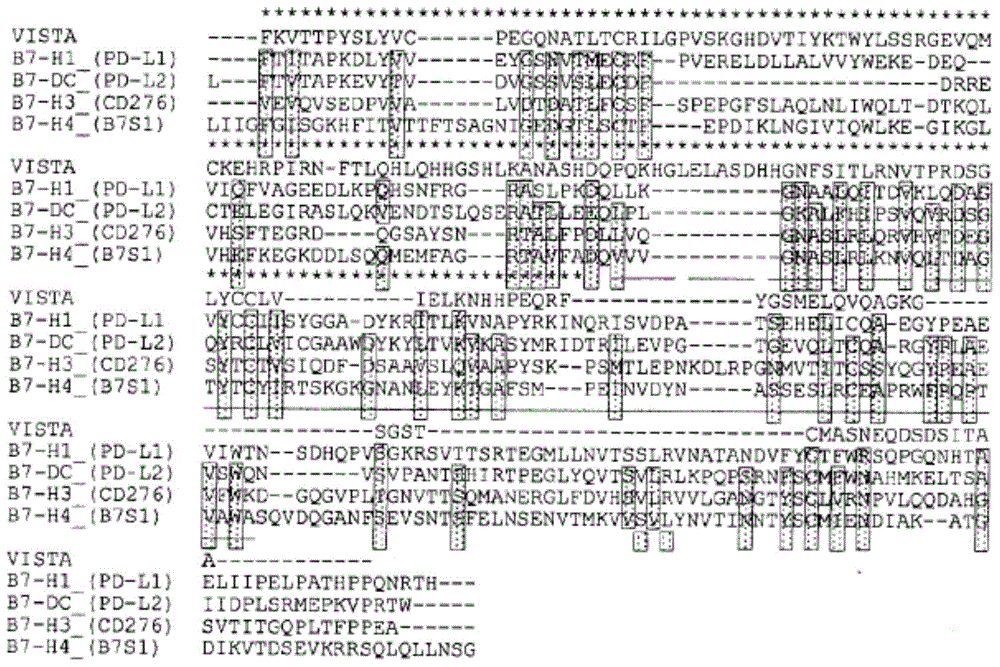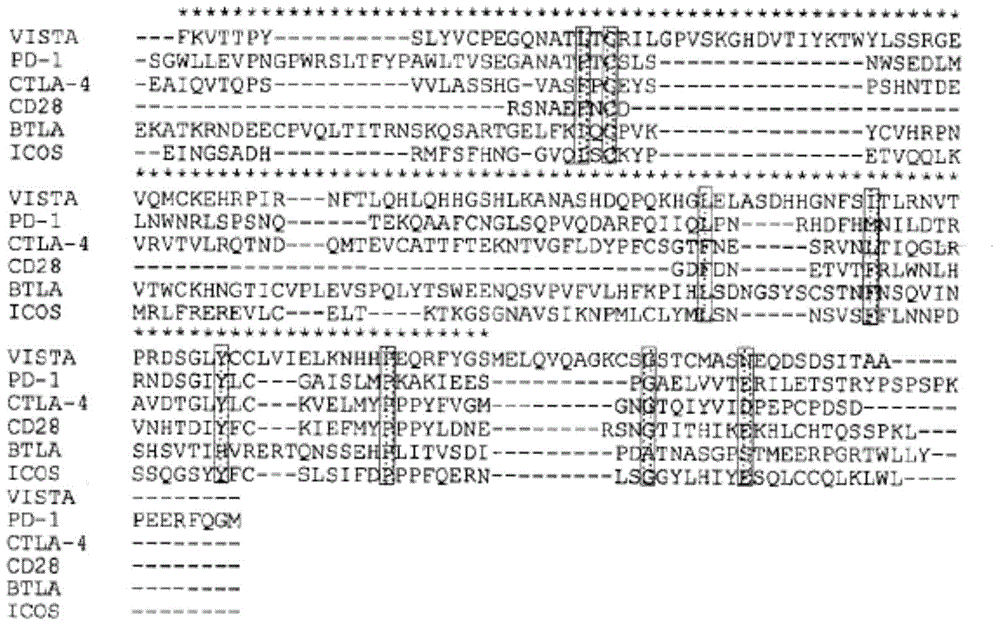Novel VISTA-IG constructs and the use of VISTA-IG for treatment of autoimmune, allergic and inflammatory disorders
An immunosuppression and variant technology, applied in allergic diseases, DNA/RNA fragments, metabolic diseases, etc., can solve the problem that the immune system cannot distinguish between self and non-self
- Summary
- Abstract
- Description
- Claims
- Application Information
AI Technical Summary
Problems solved by technology
Method used
Image
Examples
Embodiment 1
[0740] Sequence Analysis of VISTA(PD-L3) Clones
[0741] VISTA (PD-L3) and Treg-sTNF were identified by global transcriptional profiling of resting Tregs, αCD3-activated Tregs, and αCD3 / αGITR-activated Tregs. αGITR was chosen for this analysis because it has been shown that triggering of GITR on Tregs suppresses their contact-dependent inhibitory activity (Shimizu, et al. (2002) supra). exist VISTA (PD-L3) and Treg-sTNF were identified based on their unique expression patterns on DNA arrays (Table 2). VISTA(PD-L3) showed enhanced expression in αCD3-activated Tregs and decreased expression in the presence of αGITR; and Treg-sTNF showed αCD3 / αGITR-dependent enhancement of expression.
[0742] Purified CD4+CD25+ T cells were stimulated in overnight culture with none, αCD3 or αCD3 / αGITR, and RNA was isolated for real-time PCR analysis. Expression listed is compared to actin.
[0743] Table 2
[0744]
[0745] Activated versus resting CD25+CD4+nTreg Analysis revealed exp...
Embodiment 2
[0751] VISTA (PD-L3) Expression Study by RT-PCR Analysis and Flow Cytometry
[0752] RT-PCR analysis was used to determine the mRNA expression pattern of VISTA (PD-L3) in mouse tissues ( image 3 A). VISTA (PD-L3) is mainly expressed on hematopoietic tissues (spleen, thymus, bone marrow) or tissues with abundant lymphocyte infiltration (ie, lung). Weak expression was also detected in non-hematopoietic tissues (ie, heart, kidney, brain and ovary). Analysis of several hematopoietic cell types revealed that VISTA (PD-L3) was expressed on peritoneal macrophages, splenic CD11b+ monocytes, CD11c+ DCs, CD4+ T cells, and CD8+ T cells, but less so on B cells. Low( image 3 B). This expression pattern is also highly consistent with the GNF (Genomics Institute of Novartis Research Foundation) gene array database and the NCBI GEO (gene expression comprehensive database) database ( image 3 A-D). See Su, et al. (2002) Proc Natl Acad Sci USA 99:4465–4470.
[0753]To study protei...
Embodiment 3
[0761] Functional impact of VISTA (PD-L3) signaling on CD4+ and CD8+ T cell responses
[0762] A VISTA(PD-L3)-Ig fusion protein was generated to study the regulatory effect of VISTA(PD-L3) on CD4+ T cell responses. The VISTA(PD-L3)-Ig fusion protein comprises the extracellular domain of VISTA(PD-L3) fused to the human IgG1 Fc region. When immobilized on microtiter plates, VISTA(PD-L3)-Ig, but not control Ig, inhibited the proliferation of crudely purified CD4+ and CD8+ T cells in response to plate-bound anti-CD3 stimulation, such as by inhibited cell division And measured ( Figure 9A -B). The VISTA(PD-L3) Ig fusion protein did not affect the uptake of anti-CD3 antibodies into plastic wells, as determined by ELISA, thereby ruling out the possibility of non-specific inhibitory effects. PD-1 KO CD4+ T cells were also suppressed (Fig. 9C,D), thus suggesting that PD-1 is not a receptor for VISTA (PD-L3). The inhibitory effects of PD-L1-Ig and VISTA(PD-L3)-Ig were also directly...
PUM
 Login to View More
Login to View More Abstract
Description
Claims
Application Information
 Login to View More
Login to View More - R&D Engineer
- R&D Manager
- IP Professional
- Industry Leading Data Capabilities
- Powerful AI technology
- Patent DNA Extraction
Browse by: Latest US Patents, China's latest patents, Technical Efficacy Thesaurus, Application Domain, Technology Topic, Popular Technical Reports.
© 2024 PatSnap. All rights reserved.Legal|Privacy policy|Modern Slavery Act Transparency Statement|Sitemap|About US| Contact US: help@patsnap.com










